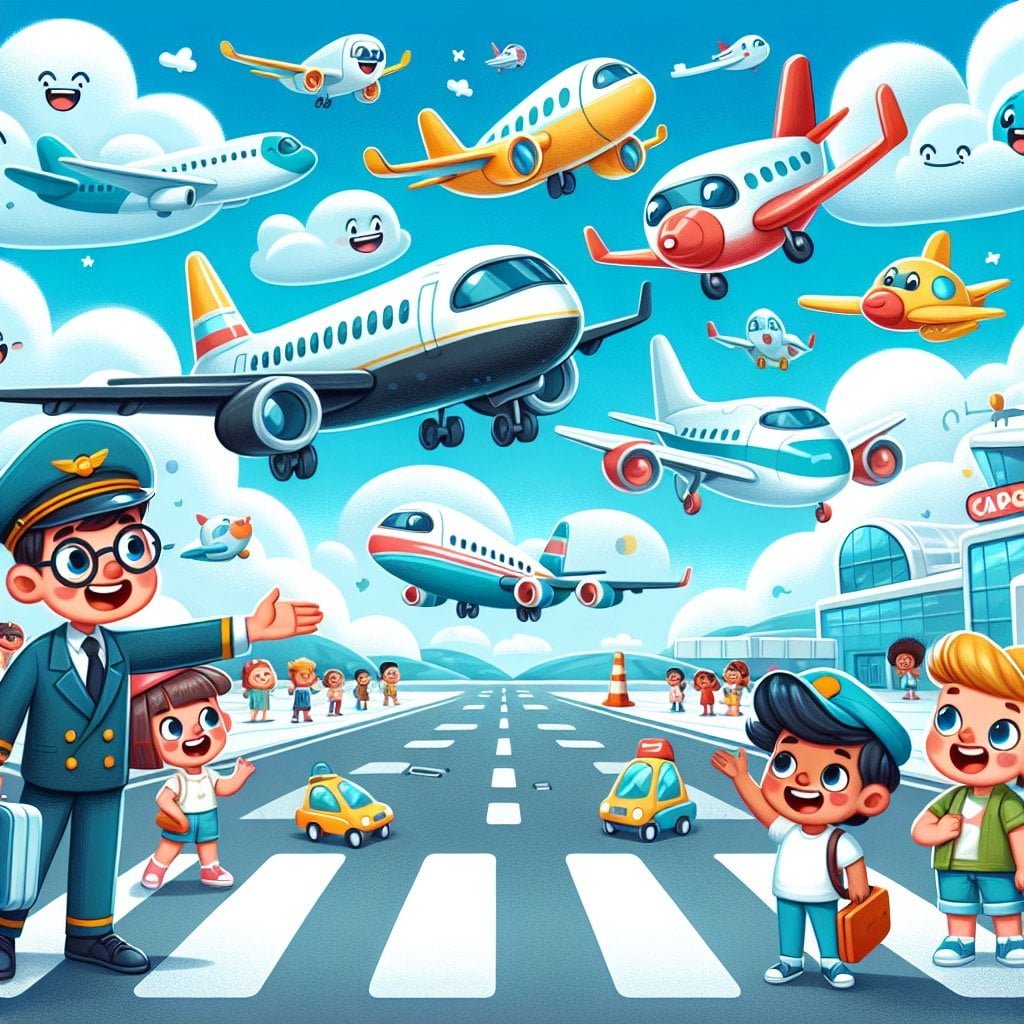Welcome to a world of wonder and excitement as we explore Fun Facts for Kids About Cars, Planes, Trains! This captivating blog post delves into the fascinating realm of transportation, uncovering incredible tidbits that will spark the curiosity of both children and adults. From flying cars that defy gravity to trains that zoom at over 300 mph, each fact reveals the marvels of modern engineering and technology. Discover how cars were once powered by steam, witness planes making lightning strikes safe, and learn about trains with built-in gyroscopes for stability. With insights on cars assembling in less than 6 hours and planes flying backwards, this post is a treasure trove of knowledge that will inspire a love for innovation and exploration. Join us on this enlightening journey through the world of transportation and unleash your imagination with Fun Facts for Kids About Cars, Planes, Trains!
Fun Facts for Kids About Cars, Planes, Trains
1. Flying Cars Exist

For younger kids: Yes, there are cars that can fly like planes!
For older kids: A small number of flying car prototypes have been developed, including the PAL-V Liberty and the Terrafugia Transition, which are street-legal vehicles that can transform into airplanes.
Detailed explanation:Flying cars are not just a thing of science fiction anymore – they actually exist! While they may not be as common as regular cars or planes, there are prototypes and even some working models of flying cars that have been developed by various companies around the world. These vehicles, known as “flying cars” or “roadable aircraft,” are designed to drive on roads like a regular car but also have the ability to take off and fly like a plane.
One example of a flying car is the Transition, created by Terrafugia. The Transition is a small two-seater vehicle that has foldable wings that allow it to take off and land at small airports. It runs on regular gasoline and can be driven on the road like a car. Another example is the PAL-V Liberty, a gyrocopter-style flying car that can reach speeds of up to 112 mph in the air.
While flying cars may seem like something out of a futuristic movie, they actually have practical applications. For example, they could be used for personal transportation, avoiding traffic congestion on the ground by taking to the skies. They could also be used for emergency services or in remote areas where roads are difficult to navigate.
Overall, flying cars are an exciting development in transportation technology that could revolutionize the way we travel. They combine the convenience of a car with the freedom of flight, making them a truly unique mode of transportation. Fun Facts for Kids About Cars, Planes, Trains are sure to be interested in learning about these innovative vehicles and the possibilities they hold for the future.
Fun Facts for Kids About Cars, Planes, Trains
2. Trains Can Travel at Over 300 mph
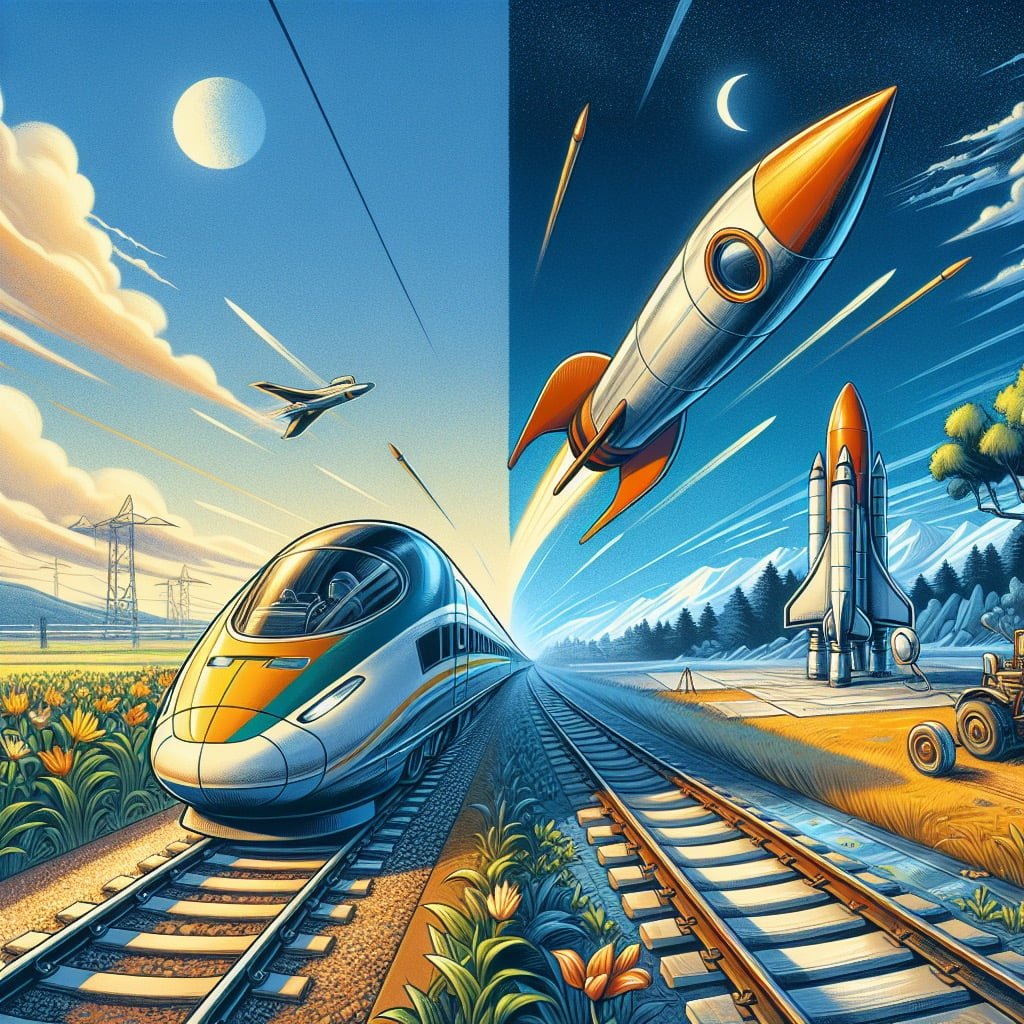
For younger kids: Some trains are as fast as rocket ships!
For older kids: High-speed trains like the Shanghai Maglev in China can reach incredible speeds of over 300 miles per hour, making them one of the fastest modes of land transportation.
Detailed explanation:Trains are a fascinating mode of transportation that have been around for centuries, and they have come a long way in terms of speed and efficiency. One of the most impressive facts about trains is that they can travel at speeds of over 300 miles per hour. This incredible speed is achieved through a combination of advanced technology, powerful engines, and specially-designed tracks.
One of the key factors that allow trains to reach such high speeds is the use of electric or diesel-powered engines that provide a significant amount of thrust. These engines are able to propel the train forward with great force, allowing it to reach and maintain speeds of over 300 mph. In addition, modern trains are equipped with aerodynamic designs that help reduce air resistance, allowing them to move more efficiently at high speeds.
Another important factor in the high-speed capabilities of trains is the quality of the tracks they run on. Specialized tracks, such as those used for high-speed rail systems, are designed to minimize vibrations and provide a smooth surface for the wheels of the train to roll on. This reduces friction and allows the train to travel at faster speeds with less resistance.
Overall, the ability of trains to travel at over 300 mph is a testament to the incredible advancements in transportation technology. For kids who are interested in cars, planes, and trains, learning about this impressive fact can be a fun and educational experience. By understanding the science and engineering behind high-speed trains, children can develop a greater appreciation for the ingenuity and innovation that goes into creating these amazing machines.
Fun Facts for Kids About Cars, Planes, Trains
3. Cars Were First Powered by Steam

For younger kids: Cars used to run on steam, just like old trains!
For older kids: In the early 1800s, the first cars were actually powered by steam engines before gasoline and diesel engines became the standard.
Detailed explanation:Fun Facts for Kids About Cars, Planes, Trains: Cars have come a long way since they were first invented, and one interesting fact that many people may not know is that cars were initially powered by steam. In the early 19th century, steam engines were the primary source of power for transportation, including cars, trains, and even boats.
Steam-powered cars worked by heating water in a boiler to create steam, which would then be used to drive pistons and power the vehicle. The first steam-powered car was invented by Nicolas-Joseph Cugnot in 1769, although it was more of a prototype than a practical mode of transportation.
It wasn’t until the late 19th century that steam-powered cars became more common, with companies like Stanley and White producing commercially viable models. However, steam-powered cars had their limitations, including long warm-up times and the need to carry large amounts of water and fuel.
Eventually, steam-powered cars were phased out in favor of gasoline-powered vehicles, which were more efficient and easier to operate. Today, we have a wide variety of cars powered by internal combustion engines, electric motors, and even hydrogen fuel cells.
In conclusion, the history of cars is a fascinating journey that includes the evolution of steam-powered vehicles. While steam-powered cars may not be as common today, they played an important role in the development of transportation technology. It’s always fun to learn about the origins of the vehicles we rely on every day.
Fun Facts for Kids About Cars, Planes, Trains
4. Planes Make Lightning Strikes Safe

For younger kids: Planes are safe even if lightning hits them!
For older kids: The metal skin and framework of airplanes are designed to conduct electrical current around the aircraft and safely dissipate lightning strikes without causing damage or danger to passengers.
Detailed explanation:Did you know that planes actually make lightning strikes safe? It may sound surprising, but it’s true! When lightning strikes an airplane, the electricity from the bolt travels along the metal exterior of the aircraft and then discharges harmlessly into the air. This is because planes are equipped with a system called the “Faraday Cage,” which helps to protect passengers and crew members from the effects of a lightning strike.
The Faraday Cage is named after the scientist Michael Faraday, who discovered that an electric charge will distribute itself evenly around a conducting surface. In the case of an airplane, the metal shell of the aircraft acts as a conductor, allowing the electric charge from the lightning bolt to flow around the exterior of the plane and safely dissipate into the atmosphere. This means that the passengers inside the plane are protected from the dangerous effects of a lightning strike, such as fire or electrical failure.
In addition to the Faraday Cage, planes are also equipped with static wicks, which are small devices attached to the trailing edges of the wings and tail. These wicks help to dissipate electrical charges that build up on the surface of the aircraft during flight, reducing the likelihood of a lightning strike.
So next time you’re flying in a plane during a thunderstorm, you can rest assured knowing that the aircraft is designed to keep you safe in the event of a lightning strike. It’s just one of the many interesting facts about the technology and engineering behind planes that make air travel possible.
Fun Facts for Kids About Cars, Planes, Trains
5. Trains Can Consume a Lot of Electricity

For younger kids: Trains can use a lot of electricity, just like our homes!
For older kids: Electric trains can consume a tremendous amount of electricity, especially high-speed trains that need a powerful electrical supply to operate at top speeds.
Detailed explanation:Trains are an essential mode of transportation all around the world, carrying millions of passengers and tons of cargo each day. However, many people may not realize just how much electricity trains consume in order to operate efficiently.
Electric trains, in particular, rely on a significant amount of electricity to power their engines and propulsion systems. The electricity is typically supplied through overhead wires or a third rail, which powers the train and allows it to move along the tracks. This energy consumption can be quite high, especially for trains that are traveling long distances or carrying heavy loads.
The amount of electricity that trains consume can vary depending on a variety of factors, such as the speed of the train, the weight of the cargo, and the efficiency of the train’s engine. High-speed trains, for example, require a large amount of electricity to reach and maintain their high speeds, while freight trains carrying heavy loads may also consume a substantial amount of power.
Despite their high electricity consumption, trains are still considered a relatively energy-efficient mode of transportation compared to cars or planes. Trains have the ability to transport a large number of passengers or goods using a single energy source, making them a more sustainable option for long-distance travel.
In conclusion, while trains may consume a lot of electricity, they play a crucial role in transporting people and goods efficiently and are an important part of our transportation infrastructure. Fun Facts for Kids About Cars, Planes, Trains can help raise awareness about the energy consumption of trains and the importance of sustainable transportation options.
Fun Facts for Kids About Cars, Planes, Trains
6. Cars Can Be Assembled in Less Than 6 Hours
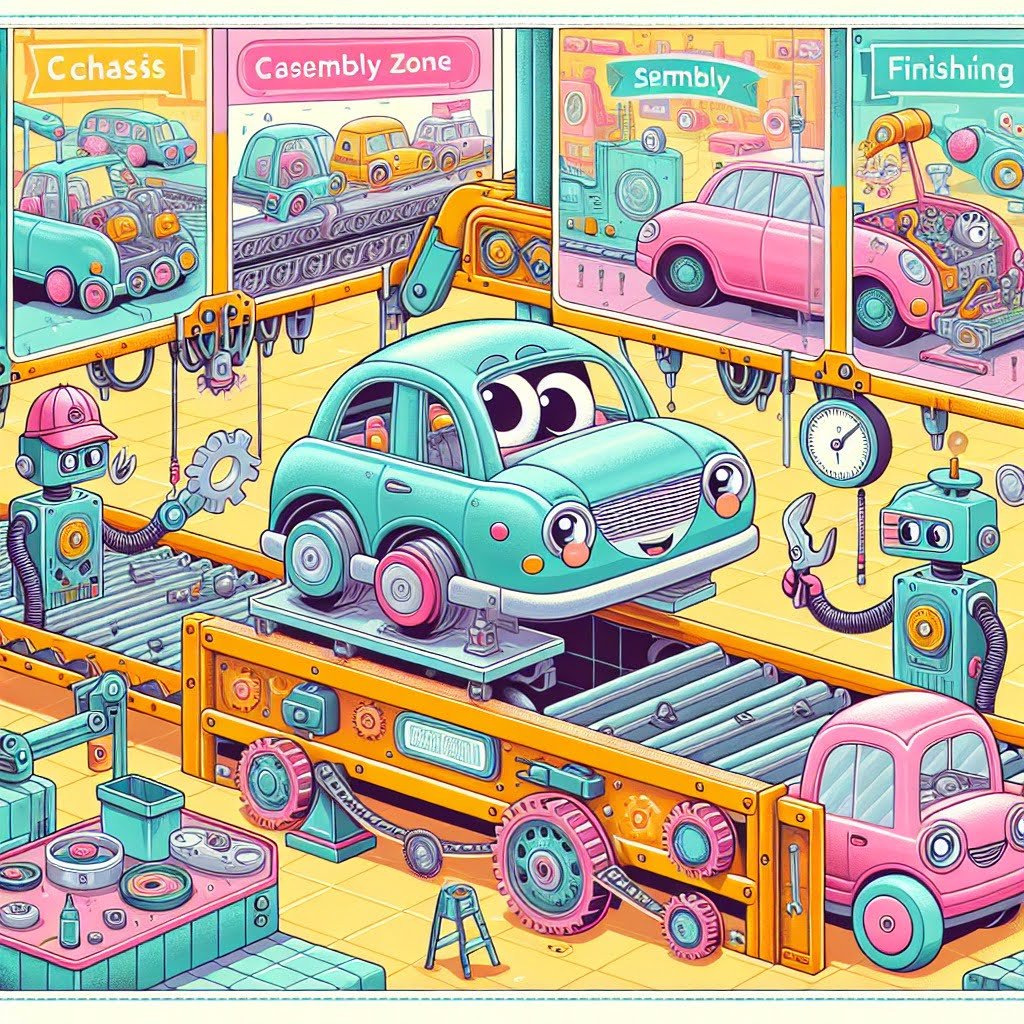
For younger kids: Some cars can be built really quickly!
For older kids: Advanced car manufacturing techniques in modern factories can enable the assembly of a complete car in less than 6 hours, from start to finish.
Detailed explanation:One of the most fascinating Fun Facts for Kids About Cars, Planes, Trains is that cars can be assembled in less than 6 hours. This incredible feat of engineering is made possible by the highly automated and efficient manufacturing processes used in modern car production plants.
Car assembly lines are a marvel of precision and coordination, with each worker and robot performing their specific task with incredible speed and accuracy. From welding and painting to installing engines and interiors, every step of the car assembly process is carefully orchestrated to ensure that each car is completed in record time.
One of the reasons why cars can be assembled so quickly is the use of specialized tools and equipment that streamline the manufacturing process. For example, robotic arms can weld car parts together in a fraction of the time it would take a human worker to do the same task. Similarly, advanced painting techniques allow cars to be painted in minutes rather than hours.
Another key factor in the rapid assembly of cars is the just-in-time inventory system used by many car manufacturers. This system ensures that the necessary parts and materials are delivered to the assembly line exactly when they are needed, reducing the time and effort required to store and manage inventory.
In conclusion, the fact that cars can be assembled in less than 6 hours is a testament to the incredible efficiency and innovation of modern car manufacturing processes. It is truly a marvel of engineering that continues to amaze and inspire both kids and adults alike.
Fun Facts for Kids About Cars, Planes, Trains
7. Planes Can Fly Backwards
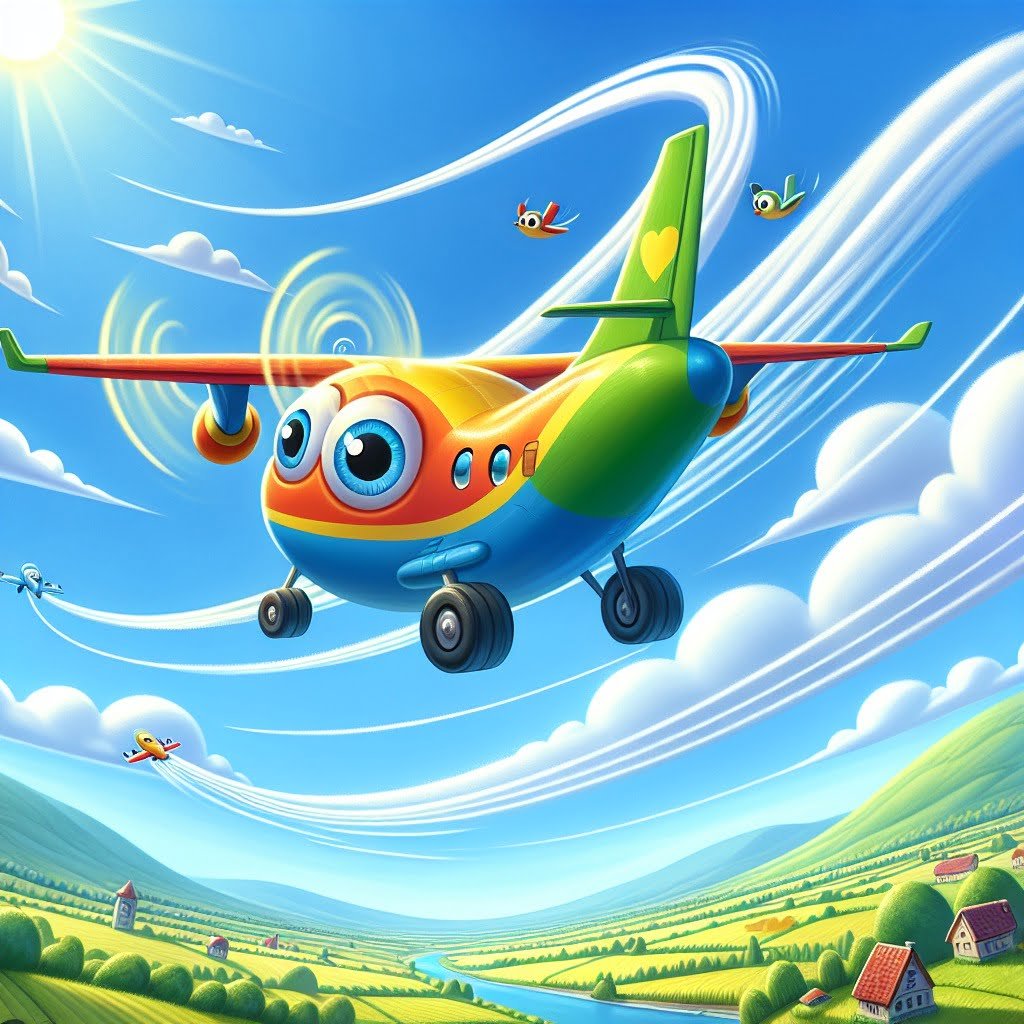
For younger kids: Some planes can fly in reverse like our toy planes!
For older kids: Specific aircraft, such as the F-22 Raptor, can perform the “Pugachev’s Cobra” maneuver, allowing them to briefly fly backwards in the air.
Detailed explanation:One fascinating fact that many people may not be aware of is that planes are actually capable of flying backwards. This ability is made possible by the unique design of the aircraft and the precise control provided by skilled pilots.
Planes are able to fly backwards during certain maneuvers, such as in air shows or military training exercises. One of the most common ways that planes can achieve this feat is by performing a maneuver known as a “tailslide.” During a tailslide, the pilot will point the nose of the aircraft upwards until it reaches a stall position. Then, the pilot will use the rudder and elevators to control the plane as it slides backwards through the air.
This ability to fly backwards showcases the incredible agility and versatility of modern aircraft. It also highlights the skill and expertise of pilots who are able to control these complex machines in such precise and daring maneuvers.
In conclusion, the fact that planes can fly backwards is just one example of the many fascinating aspects of aviation. It is a testament to the ingenuity and innovation that have gone into the design and operation of airplanes. Next time you see a plane performing a jaw-dropping maneuver, remember that it is all part of the excitement and thrill of flight.
Fun Facts for Kids About Cars, Planes, Trains
8. Trains Have Built-In Gyroscopes

For younger kids: Trains have a special device that helps them stay balanced!
For older kids: Many modern high-speed trains use advanced gyroscopic stabilization systems to maintain stability and smoothness, especially during high-speed turns and on uneven tracks.
Detailed explanation:Trains, often seen as a symbol of transportation efficiency and innovation, actually possess a fascinating feature that many people may not be aware of: built-in gyroscopes. These gyroscopes play a crucial role in helping trains maintain their balance and stability, especially when navigating sharp turns or uneven tracks.
A gyroscope is a device that uses the principle of angular momentum to maintain orientation and stability. In the case of trains, gyroscopes are integrated into the design of the locomotive and cars to counteract the forces that can cause them to tilt or derail. This is particularly important when trains are traveling at high speeds or traversing rough terrain.
One of the main functions of the gyroscopes in trains is to detect any deviations from the desired orientation and automatically adjust the train’s position to prevent accidents. By constantly measuring the train’s tilt and movement, the gyroscopes help the locomotive’s control system make real-time corrections to keep the train on track and prevent derailments.
In addition to ensuring safety, the gyroscopes in trains also contribute to a smoother and more comfortable ride for passengers. By minimizing unwanted shaking and swaying, these devices enhance the overall experience of traveling by train.
In conclusion, the presence of built-in gyroscopes in trains is a testament to the advanced technology and engineering that goes into designing these vehicles. These devices play a crucial role in maintaining balance, stability, and safety, making train travel a reliable and efficient mode of transportation for people around the world.
Fun Facts for Kids About Cars, Planes, Trains
9. Cars Can Break the Sound Barrier on Land
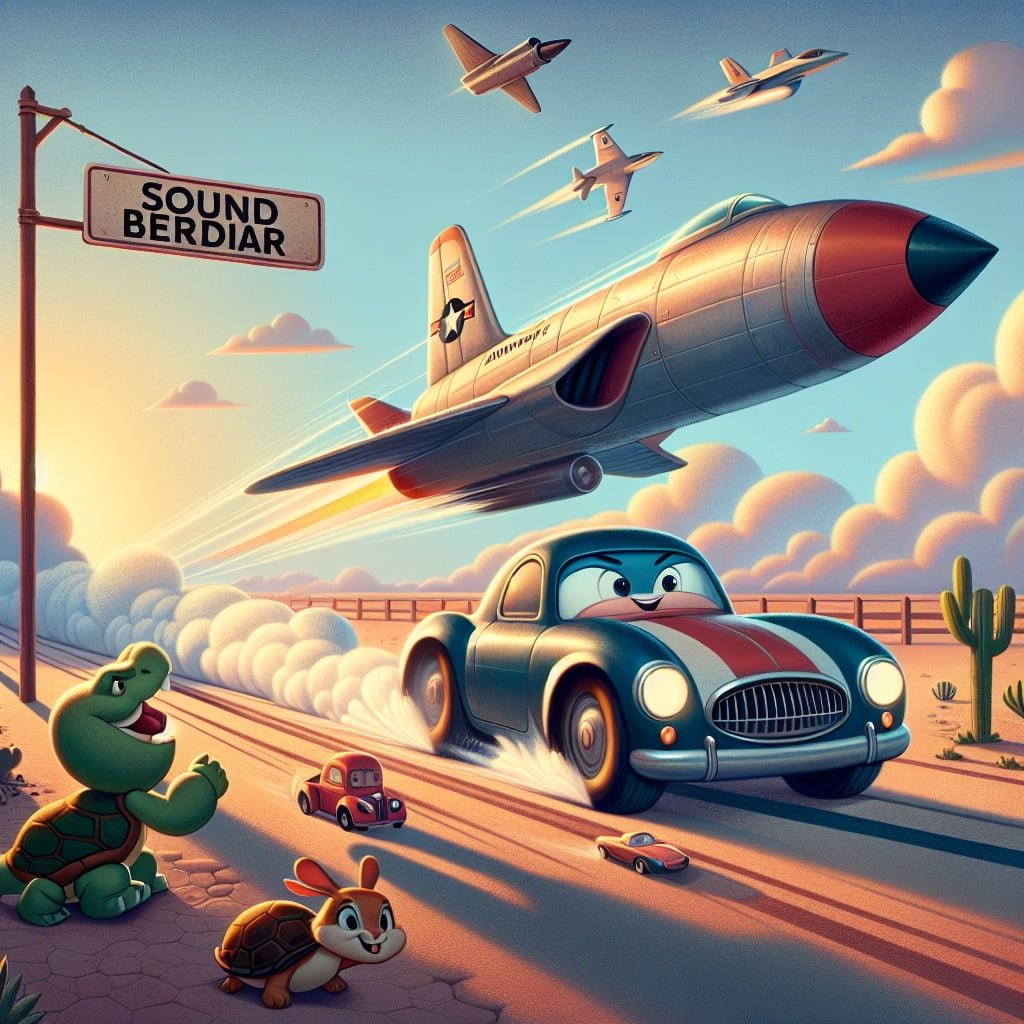
For younger kids: Cars can go as fast as super jets and break the sound barrier!
For older kids: Land speed record cars, like the ThrustSSC, have the capability to exceed the speed of sound, reaching incredible velocities on specially prepared tracks.
Detailed explanation:One of the most exciting fun facts for kids about cars, planes, and trains is that cars have the potential to break the sound barrier on land. This may seem like something straight out of a science fiction movie, but it is indeed possible under the right conditions.
To understand how cars can break the sound barrier on land, we first need to understand what the sound barrier is. The sound barrier is the point at which an object is traveling faster than the speed of sound, which is approximately 767 miles per hour at sea level. When an object surpasses this speed, it creates a shockwave known as a sonic boom.
In order for a car to break the sound barrier on land, it would need to be traveling at an incredible speed. While most cars are not designed to reach speeds anywhere near the speed of sound, there are specialized vehicles, such as jet-powered cars, that have the potential to achieve this feat. These cars are equipped with powerful jet engines that can propel them to speeds that exceed the speed of sound.
While breaking the sound barrier on land is not something that your average commuter car can do, it is a fascinating possibility that showcases the incredible speed and power that certain vehicles possess. So next time you see a high-speed racing car, just imagine the thrill of potentially breaking the sound barrier on land.
Fun Facts for Kids About Cars, Planes, Trains
10. The First Passenger Plane Was a Waterbird

For younger kids: The first passenger plane could also land on water!
For older kids: The first aircraft designed for carrying passengers was the Waterbird, a biplane that could also take off and land on water, providing early air travel over both land and sea.
Detailed explanation:The first passenger plane was actually a waterbird, or more specifically, the Liore et Olivier H-43. This aircraft was designed and built in 1913 by French aviation pioneers Henri Liore and Gabriel Olivier. The H-43 was a hydroplane, meaning it could take off and land on water. This innovative design allowed for a whole new level of transportation, as it could transport passengers over bodies of water that were previously only accessible by boat.
The H-43 was not only the world’s first passenger plane, but it was also the first plane to be specifically designed for the purpose of carrying passengers. Prior to its invention, airplanes were predominantly used for military purposes or for carrying mail. The H-43 changed the game by offering a new mode of transportation for the general public.
Despite its historical significance, the H-43 was not without its limitations. It could only carry a small number of passengers at a time, and its range was limited compared to modern passenger planes. However, it paved the way for future advancements in aviation and helped to shape the way we travel today.
In conclusion, the Liore et Olivier H-43 was a groundbreaking aircraft that revolutionized the way we think about passenger transportation. Its unique hydroplane design set it apart from other planes of its time, and its legacy continues to inspire innovation in the field of aviation. Fun Facts for Kids About Cars, Planes, Trains.
Did You Know?
In the 1800s, inventors developed flying machines that were powered by steam engines, leading to the early concept of flying cars that operate as both land vehicles and aircraft.
Summary of Fun Facts for Kids About Cars, Planes, and Trains
Embark on an exciting journey through the world of transportation with fun facts about cars, planes, and trains! These incredible inventions have shaped the way we travel and explore the world, showcasing the power of innovation and creativity. From the first car invented by Carl Benz in 1885 to the high-speed Maglev train reaching speeds of up to 375 mph, the history and advancements in transportation are sure to captivate young minds.
Learning about the principles of physics, mechanics, and technology behind cars, planes, and trains not only sparks curiosity but also provides valuable knowledge for children. By delving into the fascinating world of transportation, kids can gain a deeper appreciation for the ingenuity and craftsmanship that goes into designing these extraordinary vehicles. This blog post not only entertains but also educates, offering a rich learning experience that can inspire the next generation of engineers, technologists, and inventors.
So why wait? Explore the wonders of cars, planes, and trains through fun facts that will engage and enlighten young readers. Dive into the exciting world of transportation and discover the magic behind these amazing machines!
Sources and additional information for Fun Facts for Kids About Cars, Planes, Trains
National Transportation Safety BoardFederal Aviation AdministrationNational Railroad Passenger Corporation (Amtrak)The Automobile Association (AA)BoeingCar and DriverAirbusTrainWebAuto ExpressAviation Week NetworkNational Air and Space MuseumDiscovery ChannelHowStuffWorksPopular MechanicsScience ChannelNational Railroad MuseumInternational Civil Aviation OrganizationAmerican Automobile Association (AAA)

